

Scouting Long Island’s Decommissioned Nuclear Power Plant

Driving on Route-25a through East Shoreham, you’d never guess there was anything unusual about the gated road heading off toward the coast.
But go down a ways…
…and suddenly, it’ll appear through the trees…
Long Island’s only nuclear power plant, closed and shuttered since it was decommissioned in 1994.
Today, it sits completely empty, a relic of 1970s design permanently frozen in time.
A month ago, I heard that the now vacant Shoreham Nuclear Power Plant was available as a filming location, and I immediately set up a tour. It’d certainly be the first nuclear power plant to have in my files, and I was absolutely fascinated to see what still remained inside.
Construction began on Shoreham’s GE Mark II Boiling Water Reactor in 1973 and finished 12 years later in 1985, when it received its testing license and began operating at 5% capacity. That’s as far as the plant ever got.
Public opposition had been growing steadily during this period, in large part due to Three Mile Island’s partial meltdown in 1979 and the Chernobyl tragedy in 1986. The state and county eventually sided with the opposition and refused to approve the plant’s emergency escape route plan, which prevented it from obtaining an operating license.
In 1992, the $6 Billion facility was sold to the state for $1 (the cost was passed onto LI tax payers as a 3% surcharge on electric bills). The two-year decommissioning process commenced, the first time in US history that a licensed commercial nuclear reactor would be dismantled.
The process was completed in 1994 following the removal of 5 million pounds of radioactive waste and 560 irradiated fuel rod assemblies. The plant has been vacant and dormant ever since.
As we arrived at the doors to the facility, I noticed the first of what would turn out to be hundreds of warning signs still posted throughout.
We headed in.
As walked through the first few industrial rooms and corridors, my initial thought was that the plant seemed massive once you were inside.

It only took about four or five turns before I was completely lost.
Every once in a while, we’d come to a large open shaft going up to the roof, giving a sense of the height.
Despite being decommissioned, equipment is everywhere, some of it still in use.
I will admit, it takes a lot of self-control not to reach out and touch the thousands of buttons and levers you pass at every turn.
Also, there are pipes everywhere . I feel like I saw every possible variation of pipe and duct during my tour.
Finally, there are a lot of safety stations still in place, like this area radiation monitor.
Ditto the chemical burn first aid stations…
…and these cabinets containing emergency breathing apparatus:
After heading deeper into the plant, we came to a pair of double doors. We stepped through…
…and traveled back in time to when modern computers did not exist.
This is the reactor control room, an absolutely mind-boggling assortment of buttons, knobs, switches, lights, levers and cranks.
The equipment spans three entire walls…
…along with several work stations in the middle of the room. Look at that computer!
The desk calendar was last changed on November 8, 1994:
One of my favorite control arrays was this desk…
…which features a colorfully eye-pleasing – and easy to read! – set of lines connecting various systems with their indicator lights:
More switches…
…gauges…
…monitors…
…and more switches:
I was also intrigued by this grid of buttons, which depicts the status of the fuel rod assembly. You’ll note the word SCRAM on many of them, industry-speak for an emergency shutdown of a reactor.
Nearby, this diagram appears to monitor the overall reactor status, with more indicator lights and colorful connector lines:
Lining the top of the equipment stations were several tables of error messages, which I imagine you prayed would never light up:
The operator at this station was lucky to get a big-screen monitor:
Make your System Op quick calls here:
If you look at the rug, you’ll see a darker stripe running along the perimeter of the room. I was told that this was referred to as the “velvet rope,” and NO ONE was allowed to set foot into it without authorization from the office overlooking the control room.
This is that office:
From the control room, we headed down several more tunnels toward the reactor…
…passing more warning signs.
The Shoreham reactor was encased in two layers of containment. The outer layer, or secondary containment, is a 7-foot thick wall of reinforced concrete, traversed via this passage:
To enter the primary containment area, one would have to climb into this claustrophobic tube and securely close the enormous steel door…
…then wait on that bench for the door at the other end to open:
A phone for communicating with the outside world while sealed inside:
We stepped through the inner door…
The tour continues – Click here to go to the next page!
Similar posts.

Exploring The Abandoned McKittrick Hotel on West 27th Street
Since I became a location scout, it’s been my dream to get into the old McKittrick Hotel at 530 West 27th Street. Built in 1939, the McKittrick Hotel is said to have been one of New York City’s finest, providing lavish accommodations on a far more intimate level than larger hotels like the Waldorf~Astoria or…

Exploring An Empty Mansion: Master Bedrooms, The Abandoned Orphanage, and Beyond
Over the past three days, we’ve taken a look at the grounds of Hempstead House, the opulence of its first floor, and the decay of its basement. Today, I’m finishing off the series by taking you to the upper floors and beyond. We start by heading to the second floor via the master staircase… Though…

A Peek Inside The World’s Largest Armory
There is nothing more seemingly antithetical to New York than its armories. In a city where every building strains toward the heavens without much of a thought to width, New York’s armories brazenly buck the trend by being massively wide and extremely squat – which is one of the reasons I love them so much….
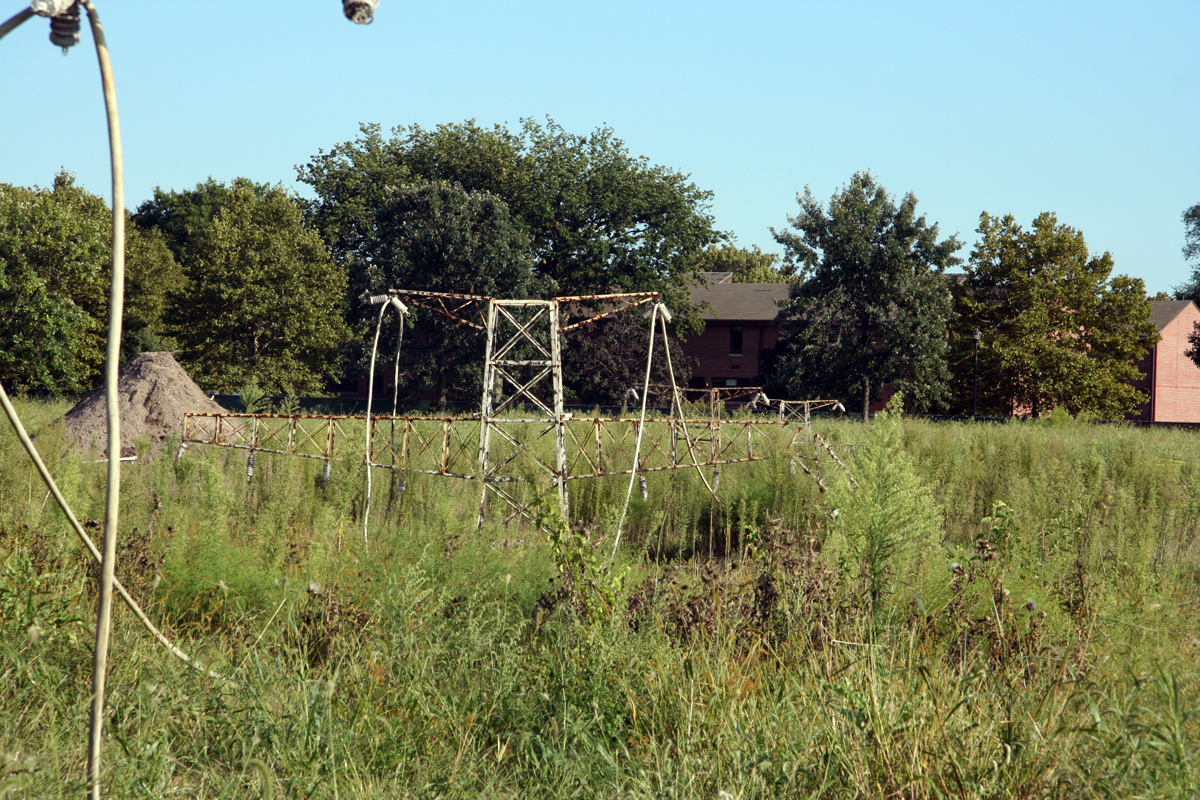
The Unbelievable Buried Town on Governors Island
Note: This does not exist anymore! Read the comments for more information! Do not go out to Governors Island looking for it! Today, I finally got on the ferry and went out to Governors Island. For you non-New Yorkers, Governors Island is an island located just south of Manhattan and was once used as a military…
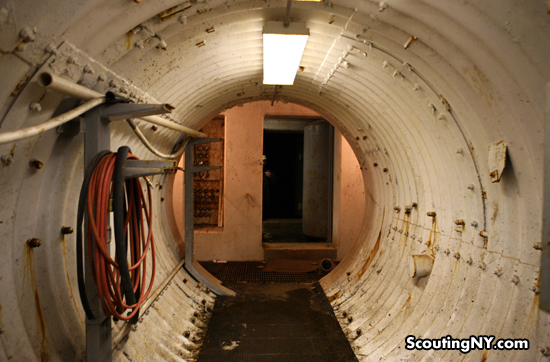
Scouting An Abandoned Cold War Missile Base Hidden In The Adirondacks
Quick note: Though you may have read about this property before, most articles have simply reprinted the same stock real estate photos over and over. As always, all pictures are my own work, and I don’t think you’ll find a tour like this anywhere else. When you first see it in the distance, you wouldn’t…

Hidden In An Abandoned Orphanage
This is the third-floor hallway of an abandoned orphanage. Opened in 1940 to house English children orphaned because of World War II, it continued operating until the mid-1960’s. Now, bedrooms that once housed dozens of orphans at a time, pictured above and below, are empty and forgotten, and have been for over 40 years. The…
61 Comments
Great write-up. Hope to see it in a movie some time!
Live-action Simpsons movie?
Was thinking that too, kept see Homer in opening of the simpsons and the green radioactive rod
MomVee, I was thinking that too! I mentally inserted Homer Simpson into a lot of these pictures.
SO SO FASCINATING!!!!! Thank you for sharing this!
Let’s reunite Jane Fonda and Michael Douglas for “The China Syndrome 2: Revenge of the Isotopes.”
I can’t stop thinking about Homer Simpson meanwhile I read your great post. Thanks for sharing!
This is so friggin’ awesome! Another one that is a classic!
Great tour, looks a LOT like where I work 😉
>Every once in a while, we’d come to a large open shaft going up to the roof, giving a sense of the height. These are the hoistways used for lowering equipment and materials to the various elevations of the building. There would have been an overhead bridge crane at one time for servicing this hoistway.
>Despite being decommissioned, equipment is everywhere, some of it still in use. These load centers presumably still power the lighting and environmental equipment OR service the natural gas powered combustion turbine plant on the site using the existing transmission infrastructure.
>I was also intrigued by this grid of buttons, which depicts the status of the fuel rod assembly. This is actually a display of the position of the *control rods*, not the fuel assemblies; you’ll find both in the reactor pressure vessel of course. Control rods would be raised into the core from below the reactor vessel to change the power level or immediately shut down the reactor.
>the word SCRAM The industry urban legend (no idea whether it is true of course) goes back to the earliest research reactors where the control rods would be held up by a rope and pulley and if anything started to perform unexpectedly, the “axe man” (literally a man with an axe next to the rope) would be told to cut the rope – i.e. Start Cutting Rope Axe Man!
>Lining the top of the equipment stations were several tables of error messages, which I imagine you prayed would never light up: A lot of these were pretty routine, a simple as it was getting close to time to change an air or water filter as the differential pressure across it started increasing. Some you very much did NOT want to illuminate!
>To enter the primary containment area, one would have to climb into this claustrophobic tube and securely close the enormous steel door… This is called the personnel air lock. It would take a minute or so to close the outer door and open the inner door. There is usually a phone and intercom inside the air lock. Under a panel in the floor is a tool kit to allow you to remove the bolted on blind flange of an emergency air port to let in breathing air in case you got stuck.
>A phone for communicating with the outside world while sealed inside: This is actually a GAI-tronics system handset. It lets you make a page announcement to the entire plant or communicate with another party on a specific line selected by rotating the knob below the red and white strip of tape. You can’t dial a phone number from it. The panel to the left controls the opening and closing of the doors and valves in the air lock.
> Every once in a while, you’d pass by a “Hear-Here” booth, which I imagine offered some quiet when talking on the phone in a noisy environment: Meh, they’re not really that helpful other than identifying where a phone or GAI-tronics handset is located!
> And finally, one more control room, this one dedicated to the operation of the containment building: > I gravitate toward the more colorful panels: I think this control room was likely for radwaste processing or plant water chemistry. The panels discuss various waste tanks, deionizers, and acid / caustic supplies (used for bringing water to a neutral pH for further processing, use in the plant, or discharge).
Keep up the great work!
No natural gas fired plants in that area at all. In fact, No natural gas within almost a mile of that place. Those electric “peaking” plants are diesel fired units.
Indeed: http://www.jpowerusa.com/projectsShoreham.html
Most folks east of the plant were firmly against its opening, since we were essentially written off in an evacuation plan. Unless you had a boat with which to go a direction other than west, you would have been screwed.
Every horror and sci-fi movie made in the next 25 years will use this location. Wow.
P.S. Very cool comment from Jason too.
I would want to press every single one of those buttons… and flip every switch. I’m normally not OCD, but when I see buttons and switches… I go nuts. If I’m walking past a fire alarm, I literally have to walk along the opposite wall because I think I’m going to one day reach out and pull that alarm.
I have issues… 🙂
Another great tour. This building would be the perfect location for a movie or crime scene tv show.
If you take the Bridgeport-Port Jefferson ferry this plant is of only four structures on Long Island visible from the Connecticut side. The others are the smokestacks of the (conventional) power plants in Port Jefferson and Northport, and Stony Brook hospital.
Would be a good The Following episode
my husband and i loved your photos of the Shoreham Nuclear power plant. he worked on site in nuclear engineering for many years, up until it closed.
I heard that Sacha Baron Cohen was filming a movie there a few years back.
Gotta ask, since you had to drive past it on 25A to get to the power plant, is Tesla’s old buiding still there?
Some of the building are still there, but in rough shape. An nonprofit just raised a bunch of money and bought the property to turn it into a Tesla museum. They’re over at http://www.teslasciencecenter.org/ if you’re interested, they’re usually looking for volunteers to help clean up the grounds on weekends when it’s nice too.
I worked at the Shoreham Nuclear Plant for two years. I still remember the day coming up the drive and the stacks coming into view…it was like I was coming upon a movie set. Met wonderful people, some of which I still keep in touch with today…and all with a common goal to get this plant online. I worked on many of the “drills” and you would absolutely swear the melt down, or whatever other scenario they came up with, was actually happening. There was deadpan seriousness in that room and everyone had a job to do and took it VERY seriously. It always impressed me to see the dedication of those people who worked on that plant and worked so tirelessly to get it ready to open. Probably the most safest nuclear plant ever built…such a shame it never came on line. We could use that power today!!!
I agree such a shame it never opened. My dad worked there several years and very proud of it.
Yes, it is a shame it never came to be. People are still paying for it and they got what they wanted. Trouble is that most people want this and that, as long as it is not in there back yard. If all you can do is complain about this and that, then you to are part of the problem. “Put it in someone else’s back yard, not mine”
All the flickr links go to a page that says “Oops! You don’t have permission to view this photo”. Great photos! (but would love to see bigger versions)
Best place I’ve ever worked at Miss SNPS…..!
I worked at SNPS for over a dozen years as a security supervisor. These pictures sure brought back a lot of lost memories. The best job I ever had in my over 50 year working career. What a waste of time and money decommissioning this plant. This plant was ready to go, as were all of us dedicated employees. SNPS …gone but never forgotten.
Hi Skip ! I stumbled across this archive of photos today and was taken way back in time! I remember you in the Security Dept., before it was YOH Security even. I was in Operations Dept from 84 to 94. I was friends of Jim and Steve Diagostino from your Security team.
Anyway, it is sad to think of what a monumental waste it was to throw that plant away. The photos of what’s left deteriorating is quite amazing. Never thought that the day would actually arrive that they would throw it all away when I first got there. Good memories working there. Wendle L., SNPS badge no. 849
Wendle, What shift were you on in Ops?. I worked there from 80 to 89 and was a SRO Shift Supv working with Bill Nazzaro and later Tony Matasich (not sure of the spelling. Joe Guttieri
Hello Joe !
Thanks for coming to take a look at what’s left of the most incredible nuclear financial disaster in history! Simply amazing what they did to the place I thought we’d all retire from.
As for my shift, I was on C crew, as I remember calling it. Came in November 84 as EO. Bill Nazarro and Warren Uhl’s crew; and Dean Rhinehardt as NSO. We had Marty O’Brien out in Rad Waste Control and a thin guy, with the shakes, named Jim who smoked constantly, as the veteran EO. We had Kevin Dingle, as the 3rd EO. After the 84-86 Hot License class finished John Santiago and Phil Plunkett came on C crew as NASO’s in the Control Rm and Wayne Loris as NSO. Dean got his SRO and was promoted to Watch Sup. I went to RO Cert in Hauppauge from 86-88. Got license and came back to C crew under Peter R. Miller, WE and Rick Reeves, WS. John S. got promoted to NSO on another crew. I stayed for most of the decon and fuel shipping till April 94 and was allowed to post for Gas Customer Service job out of Queens/Nassau. Ended up driving to Rockaway Park, 108th Street my first year from Shirley! (63 miles). Anyway, I remember you well, Joe. You were in the operator group with Mike Gardner, Mike Dugan, Rick Andersen, etc. When I got to Shoreham, I thought you were on Willie Charvat or Pop Holly’s crew? ; not sure. Little sketchy there. But, anyway, memories of SNPS do not go completely away, they just fade with some sort of half life! How bout this— You always impressed me as a sharp dresser in the control room, so I learned how to do the Guttieri “shirt tuck” way back then. You didn’t know I copied that from you. That is the absolutely only “tuck” for every button down shirt, to this day! Never leave home without it.
Take care. Good to see your post. I’m in Solar Power Operations now, just recently after years in Combined Cycle generation. Never went back to nuclear after I saw them bores holes in the Shoreham pressure vessel. That paradigm was destroyed for me, but life went on. Have a great day!
Wendle Lehnerd [email protected]
I worked at SNPS from 82-94. The real irony is that the much revered BNL was the true nuclear nightmare. The stuff that was going on over there would have been great news fodder for Newsday but for some reason they received the “golden child” status. I worked there from 94-2000 after I got excessed from Radiochemistry. A truly fascinating place, but safety and environmental regulations did not receive exactly …what we from SNPS would call…verbatim compliance. The place was a radiological/hazardouos waste disaster area. Left BNL in 2000 and ended up in Maine’s Radiation Control Program. Nice landing spot, but I still haven’t made my 1994 SNPS salary. Control Room line 1, Control Room line 1….
Yet another detailed and well-thought out post! thank you
I find it tragic that the people of Long Island has to eat that extra 3% over the sale of the property. $1?!? What an outrage.
Real dinosaurs died and decomposed millions of years ago. This modern dinosaur will be an eyesore forever. And just think of the cost just involved in decommissioning this plant to this sorry state. Just say no to nuclear!
“Fuel rods would have been loaded into the reactor via these tracks, first passing through the seven-foot thick outer shield…” is not quite correct. That access is for removing and replacing the control rods, which on a BWR enter from the bottom. The fuel was loaded from the top when the reactor vessel head was removed during outages.
Other wise, this is a great set of pics!
Thank you Jason for explaining the to the people especially the narrator about what they really were looking at. You were spot on, since I was there as an operator for many years. Crew “C” to be exact. The pictures do bring back many memories. For that I thank the scout for braving the elements 🙂 .
Nick, I worked on that Decommissioning from early 1992 to July 1994, on the Termination Survey (the final radiological cleanliness survey). Thanks for the trip down memory lane….even got to see my old office window from the outside. Couple of corrections I could offer: the plant actually was granted a full power operating license by the NRC…on a Friday; the following Monday, the utility (LILCO then, LIPA now) and the State of NY announced the decision to abandon the plant…talk about a blow to the solar plexus of everyone who had sacrificed family time to meet all those milestones! Unfathomable. The second photo of additional “shielding walls” actually shows walls that were once intact but contaminated at a low level. The walls were cut apart and left standing at these spatial intervals to fall below the allowable radiation levels set by the NRC at the time (“dilution is the solution”). In fact, I wrote the work instruction for applying those grid marks that you see on the structures, defining one square meter. Not every grid was surveyed….the draft NUREG at the time allowed for random or systematic surveying of some areas, depending on the degree to which the area was affected by reactor operation. Certainly, in the containment, every floor grid received a measurement. You do refer to the “reactor” in your photo captions….actually, the reactor vessel was cut up and removed in rings by a radial cutting arm….kind of like cutting a tin can into rings, working from the inside. The metal was sold to the US Govt to serve as shielding material in areas of their facilities with even higher levels of radiation. The fuel itself was shipped by barge to the Limerick power plant in Pennsylvania, which could use it in its reactor…in fact, Limerick was paid to receive the fuel. (“May I gas up your car? In fact, let me pay you to receive the gas, and I’ll even deliver it to you”…what a deal!)
Please feel free to consult me for any other “behind the scenes” stories you might be interested in….there’s a great film waiting to be made about that Shoreham project itself.
Fabulous post! Long Island holds plenty of surprises. Back in the late 70s, we considered building a custom home near Huntington. The real estate agent showed us several properties, one of which had a decommissioned, empty missile silo.
That Control Room! What a fantastic tour, Nick! Seriously appreciate you sharing this with us!
I worked for Stone &Webster Engineering. I was the youngest Administrative Asst. At age 20. I met my husband there, who recently passed but would h ave enjoyed all of these photos. My father worked there as well, a union Sheet Metal foreman. Thank you
My good friend, Nora Bredes, was the most instrumental person in stopping this plant. She later went on to become a Suffolk County legislator and was just an all around amazing woman, friend, and mother. She passed away a few years ago from breast cancer but I know stopping Shoreham was one of her proudest achievements.
The irony…She dies of Breast Cancer ( was that Shoreham’s Fault?) I wouldn’t consider such a tremendous waste of resources and potential an achievement by any stretch .
paying a 3 percent surcharge on electric Bills for 30 years to fund something that was never realized . How is that an achievement to anyone ? Paying another utility to take fuel rods?? Oh yeah! Long Islanders made out on that deal …
LONG LIVE Nuclear Power !
Thank you for the photos
+919649673702 call me
What a waist, all of the money spent to plan and build and then to sell to the state for a dollar just to spend more of our money for decommissioning. Very, very sad state we live in, shame on New York!
I worked there for 8 1/2 years and can recognize everyone of those pictures. I worked in every part of that facility. So did many others. It had three backup systems in addition to the normal operational systems. It was safe as any one of them at the time. For those protestors out there consider this when you are sitting in your dark unheated house someday in the future. Driving a car to the local stores is much more dangerous then this plant was. The earth is not flat.
I did security for LILCO during the evacuation drills. No local officials participated in the drill (political suicide). The NRC ruled that NRC and FEMA officials could roleplay those positions with the assumption that if there were an accident they would participate. Their plan involved using buses to evacuate people, but no bus company volunteered. Sirens were to sound to warn people of the emergency, but on the day of the test only a fraction of them functioned and most residents didn’t hear them. They still passed this regulatory hurdle.
The whole exercise was rather surreal.
I got my start in the Nuclear industry at SNPS. I worked in the LILCO Project Office with some of the finest Engineers and Admin Staff. Before I left I was involved with the Transamerica Delaval Emergency Diesel Revalidation. I remember LILCO bringing in Failure Analysis Assoicates (Same Company with the TV Show “What Happened”) to provide high tech engineering and legal services. FAA has a trailer located by the EDG’s which looked like a NASA Control Room to me at the time. FAA had a transmitter the size of a small shoe box strapped to the Crank Shaft to measure dynamic flex, strain gauges attached to the cracked engine block. All in an effort to revalidate the design on these diesels. LILCO ended up bringing in 4 EMD Diesel’s from New England Electric and replaced the TDI’s with Colt Pielsticks EDG’s. What a shame that LILCO invested so much money only to see ~ $8 Billion wasted which was in-turn passed on to the customers because it became a Political football under Gov Mario Cuomo administration. His son is trying to shutdown Indian Point, only to leave Fossil Fuel generating stations to produce electricity. The ironic part of Shoreham is that not too far away were mutilple test Nuclear Reactors at Brookhaven National Labs which I’m not sure many Long Islanders were aware they existed there for years.
Oh, that computer room is nothing short of beautiful.
I loved/hated working there (82-94) Hated mostly because of the mind numbing shift rotation !! Slid over to BNL for 6 years. That place was crazier and less safe from many perspectives than Shoreham…for sure!! It was also an AMAZING facility…or more correctly a collection of amazing facilities.
Hey, any other Shorehamites out there?
Hey Steve, Joe Guttieri here. I remember your name, but can’t remember your face. I was one of the Operations SRO Shift Supervisors and left in 89 right after they announce the shutdown. I ended up working for Westinghouse at the Savannah River Site. Talk about stepping into the dark ages of Nuclear power! I lasted there about 2 years after which I said goodbye to Nuclear Power.
Simply beautiful write up and amazing pictures. My question is how does one set up a tour of this facility. I’ve been trying to find a location for a film I’m working on as a school project and from the pictures this could have a lot of potential so how does one get a tour and permission to use this location?
As an employee at then New Hampshire Yankee (Seabrook Station) during the late 80’s and finally receiving our full power license in the early 90’s we watched this situation with great interest. Having done the low power testing then seeing the station shut seemed like a terrible waste. The photos are awesome……
WOW! I just came across the photos! Boy, does this bring back memories! I haven’t seen the inside of the plant since I left in 89 after the closing was announce. I was in Operations and was a Senior Reactor Operator & Shift Supervisor. I along with the Shift Manager were responsible for the operation of the plant. During the back shifts the entire plant staff reported to the operations staff. This included IC, Health Physics and Maintenance. My office, which overlooked the control room, is the room shown in the photos with the standing fan, two desks and a few bookcases. I was fortunate enough to start working at the plant in 1980 when it was approximately 75% complete, and had the opportunity to climb, crawl and walk through every square inch of the plant prior to pulling the first criticality. I was on shift when the one of the Trans America emergency diesel generators snapped it’s crankshaft, which ultimately delayed our start up and gave the anti-nuke people more ammunition to use in their arguments against opening the plant. I was also on shift for the initial criticality. Unfortunately the state of the art plant fell victim to cost overruns, delays, bad press, the anti-nuclear movement, Three Mile Island, and even Chernobyl. I loved working there, despite the horrid shift work, and I loved the people who I worked with They were the most professional people I ever had the opportunity and privilege to work with and for. I miss them all. Occasionally I get back to LI to visit family and my old house, and once in a while I drive by the plant for old times sake. Thanks for sharing the great photos and story. Too bad you couldn’t see the suppression pool directly below the reactor vessel. The suppression pool looks like something right out of a scii-fi movie. Hopefully I’ll see it in some movie someday.
Hi Joe, I remember working with you, Jerry Bobka, John Dugan Sonny Lum, Rick Reeves ,Tony Mattesich, Tom Davis, Greg Good Pete Davisson, Gerry Gauding and a lot of others. It was a great place to work with great people. Carlos Harris, Holly Hartwell, Neal Hughes and I took a job at a plant in the Midwest. Neal left after a few years and we heard he passed away about 5 years ago. Carlos, Holly and I are all retired now and I see them from time to time. I still talk to Tom Davis and Gerry Gauding every once in awhile.
I think the guys sweeping the floors made $17 – $20. an hour back then. I knew an electrician who worked there. He said when they finished a task then ripped it out and did it again. Ditto. This is what I was told first hand. I lived in Rocky Point (Next Door Town) at the time. We all knew it would never opened. At least a lot of good workers made lots and lots of money.
Yes, that’s what I was told. The plant was sitting offline so long that parts/design would become obsolete.
Hello, I enjoyed seeing all the photos! I am into photography and I enjoy taking photos of old architecture and various other things. My friend and I drove out there this past weekend to get some shots of the building but since I could not find an exact address online, we couldn’t find it! ha ha. We did stumble upon a road that took us to a view of the plant but from across the water. Can you tell me the exact address? Or tell me what is across the street from it? I know it is down a long road. We went down a bunch of those but could not find it. Also, how were you able to get a tour of the place? Who do I contact for that? Thanks!
Wow…looks like I replied to this already…and I keep coming back to the site. Like Wendell said Joe, it has a memory half life. I dream of the place far too often. The plant was a magnificent machine. And Stripers in the river to boot!!
I worked at Lilco Start Up from 83-85’ish as a secretary right out of HS. My brother and his ex also worked there. To this day, best job I ever had and just an awesome bunch of people. Wish I had stayed till the end. Grew up in WR, moved away and now am back in my hometown and there the plant still sits. Can’t say my grown up self would work at a nuclear plant, but my younger self had a blast. Ironically, my parents were anti-nuke and participated in the protests at the gate, but bless their heart, they never said a word to me about working there.
Sort of a bizarre question, but does anyone have any idea if you can visit the plant whether it be the interior or the exterior? Any sort of tours? I’m a high school history teacher and I’m teaching a nuclear history class this year to my 11th and 12th graders. It’d be a real treat to visit!
I’ve been fascinated with the Shoreham Nuclear Power plant ever since I saw it for the first time in 2005. I remember hearing about it when I was like 7 or 8, but didn’t really care/ didn’t think about it because, well, I was 7 or 8. I always wanted to drive up the road that brings you up to the place, but I didn’t want to get into trouble. I actually drove past it a few days ago. These pictures are really great, and seeing the interior of the place that’s basically frozen in time is fascinating
I’m somewhat ambivalent about the whole situation; on one hand, the cost of electricity might have been lower, and the odds of a catastrophic meltdown were/are pretty low, but on the other hand, *if* anything did happen, people living in the surrounding area would have been *really* screwed. It’s really unfortunate that the place became a 6 billion dollar paperweight, however.
Comments are closed.
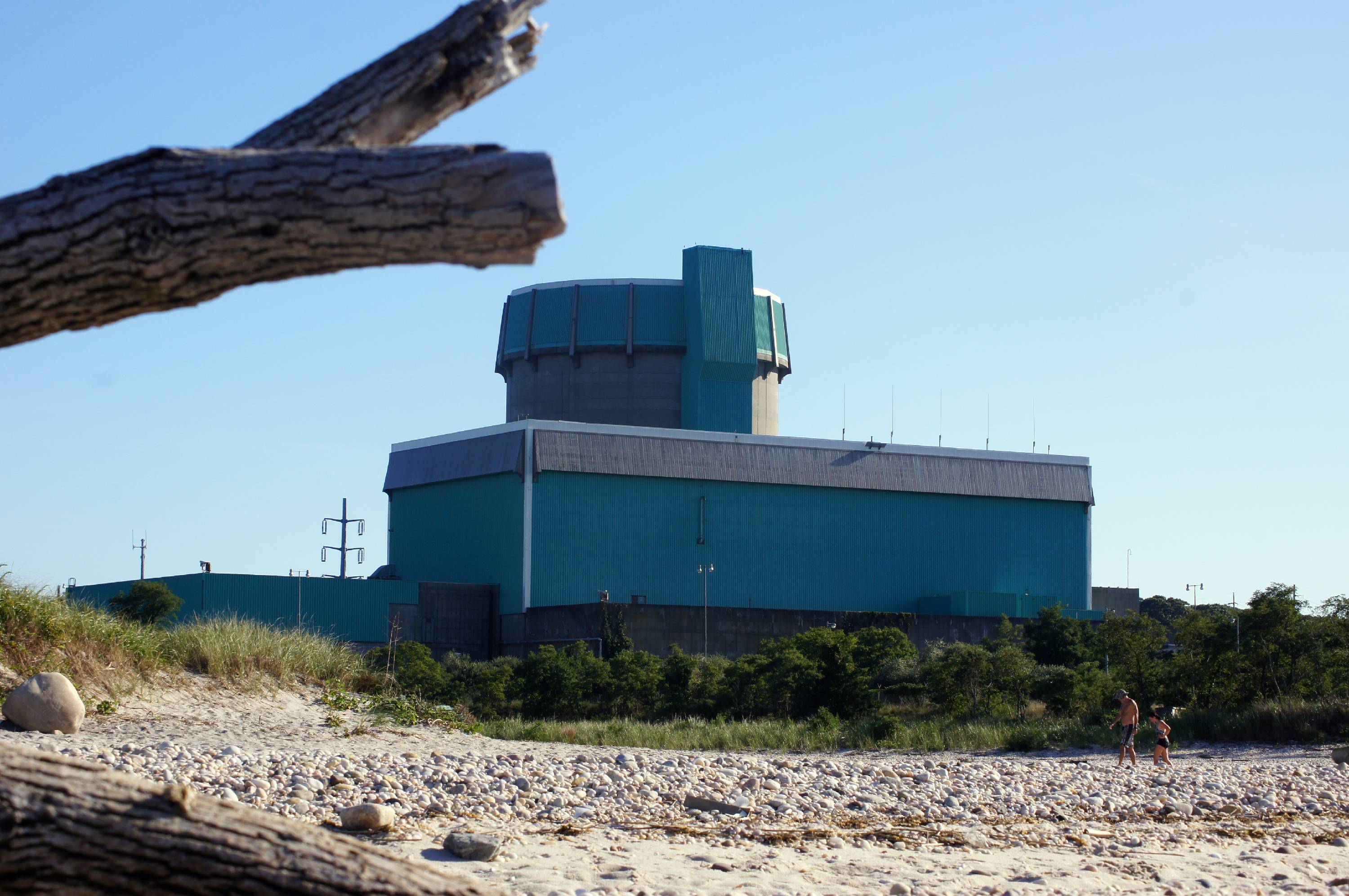
No Escape As nuclear disasters fueled opposition and led to expanded nuclear plant regulation, the evacuation plans for Shoreham emerged as a central issue in whether it could -- or should -- ever open. "How can you evacuate Long Island?" asks Kessel. "I mean, you can't get off of Long Island on a normal day, let alone a nuclear emergency, in an area where it's very bunched together out on the East End." "Anybody who's ever been in rush hour traffic knows you couldn't possibly safely evacuate Long Island," says Dawidziak. "And how about the people on the East End? What are we going to tell them, swim for it?" Cordaro says the opposition seized on the issue of evacuation. "That was one of my personal projects and I was in charge of the emergency planning process," he says. "We evaluated all the different kinds of accidents that would take place at the plant. And we saw that it would have no impact on this population zone. We demonstrated... that we could put an emergency plan in place to take care of all of Long Island." To get federal approval to begin operating, LILCO needed to demonstrate the safety of its evacuation plans in conjunction with local emergency officials. But it did not find willing partners. "In order to put a nuclear power plant online, you had to have a successful evacuation drill, to prove that it could be done. And Suffolk County was refusing to go along with it," says Dawidziak. "They would refuse to participate. So if the local police… won't participate, how could you have a successful drill?" New York state, under the leadership of Democratic Gov. Mario Cuomo, also refused to take part in the evacuation drills. The evacuation issue touched off a yearslong battle involving the utility and state and local officials. LILCO eventually staged its own drills, with its workers posing as emergency responders. But Long Island's dead-end geography is cited as one of the major factors that changed public opinion on the road to the plant's eventual abandonment. News 12 Vintage: Two Families, Two Views of Shoreham
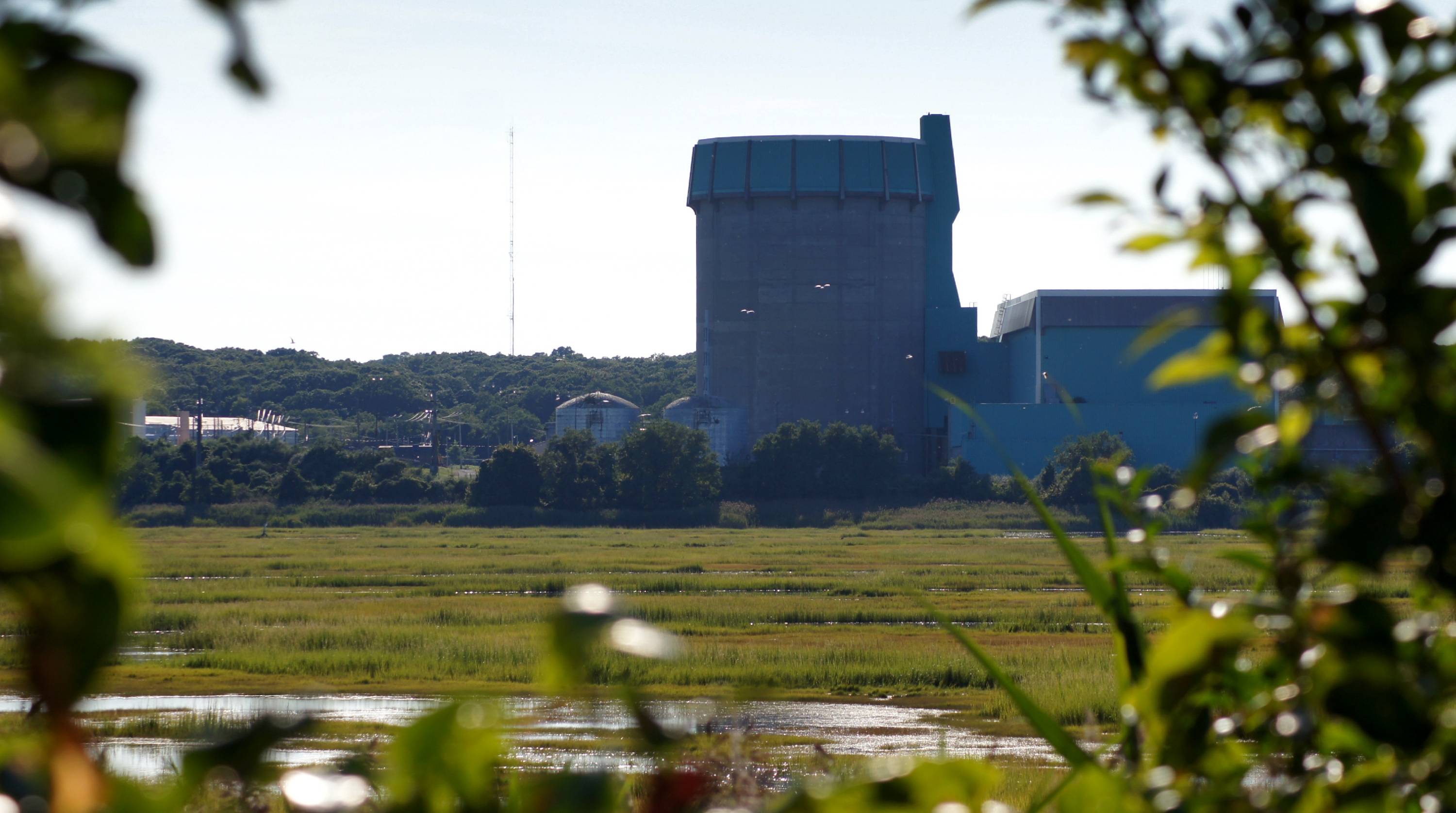
“LILCO had clearly lost the confidence of the people, and therefore had lost the confidence of the elected officials,” says Dawidziak. "I think there was just a demand that this utility had so lost the confidence of the public and elected officials that it was time to replace them with a public authority." “It was public enemy number one,” Kessel recalls. “Gov. [Mario] Cuomo took up the cause to close Shoreham, and it became a cause celebre.” The state founded the Long Island Power Authority with a mandate of exploring a LILCO takeover — and that eventually became the vehicle to shutter Shoreham. There were false starts, impasses and stalemates that seemed unending. In 1988, Cuomo and LILCO announced a deal to shutter the plant -- but it was attacked as too costly for ratepayers. The next year, on Feb. 28, 1989, officials reached an updated version of the accord. Under the terms, LILCO agreed to sell the Shoreham plant to the Long Island Power Authority for $1, and agreed not to operate the plant even if an operating license was granted. Kessel says he has the dollar framed, and kept it in his office for many years. Within months of the deal's announcement, the Nuclear Regulatory Commission voted to give Shoreham a full license. News 12 Vintage: A Deal is Struck - 1989
For Shoreham's diehard opponents, the deal wasn't perfect, but Dawidziak says they eventually agreed that keeping the plant closed was what mattered. "We had a big meeting up in Stony Brook, all the anti-Shoreham people basically were there," says Dawidziak. "And it was a bit of a contentious meeting because some people wanted to fight on. And Peter Maniscalco famously got up and said, 'I got into this battle to stop the plant. This does that, and this is what we should do.' And that's what we agreed to. He said, 'I didn't get into this to put LILCO out of business, I got into this to stop the plant.'" With a deal in place after all parties approved it, the process of decommissioning and decontaminating the plant began. Kessel, named the second chairman of LIPA, led the utility during the decommissioning process. The components that could be salvaged were stripped out and sold off -- its fuel rods were barged out to Philadelphia Electric for its Limerick generating station, according to Kessel, who says he traveled there to see the rods being installed. But the bill for the plant still had to be covered. Despite its initial projections back in 1966— around $65 million — the final tab stretched to at least $6 billion. "The ratepayers of Long Island would have to pay over $6 billion for this abandoned nuclear power plant," says Halpin. "Looking back at that, I think we all could have done a better job in forcing LILCO shareholders to pay more of that cost. They did pay close to $2 billion — probably should have been more," says Kessel. "The only way that the plant could have been abandoned was for the governor to offer a sweetheart deal to the Long Island Lighting Company to make them walk away," Cordaro says. "And it was the deal you couldn’t refuse... It was a no-brainer on the part of the company -- not so much for the ratepayers." "The agreement was that there would be a surcharge on everybody's electric bill for the next 30 years. And last time I looked, it's still on the bill," Halpin says. A LIPA spokesman told News 12 that the so-called "acquisition adjustment" -- the term used to describe the purchase of Shoreham -- would be paid off "within the next decade or so." Cordaro says the abandonment of the plant was a disaster for Long Island in many respects. “It was an environmental disaster, it was an energy disaster, it created air pollution, it was an economic disaster because of the contribution the plant would have made to taxes, the local economy, salaries, a number of different things,” he says. Opponents argue that the true disaster might have been averted by keeping the plant shuttered. “If there had been an accident at this facility, the damage it could have caused to public health, the ecosystem, the Long Island Sound – could have been a lifetime,” says environmentalist Adrienne Esposito, executive director of Citizens Campaign for the Environment. “It could have lasted a lifetime. And so if there was an accident, the severity of that damage almost is unquantifiable.” “It’s almost impossible to speculate,” says Dawidziak. “Would the plant have been safe? Might there have been an accident? Might there have a Three Mile Island-type of situation here? What would that have done to property values locally, what would that have done to people wanting to move here? All of those things are impossible to speculate, because you don’t know what would have happened.”
The Future of the Plant Its parts of value are long gone -- some sold off, others auctioned. But the shell of the Shoreham plant still stands, surrounded by woods, water and wetlands. LIPA declined repeated requests for a tour of the property, citing safety reasons. But News 12 was granted access in 2003, and our cameras documented peeling paint, rusted pipes -- even coffee cups with workers' names on them.
News 12 Vintage: Exclusive tour inside the Shoreham nuclear plant - 2003
Some uses have been found for the site over the years. "We put up some windmills there, a small peaking plant was built on the site. The cross-sound cable is plugged in at the intake canal at Shoreham," Kessel says. Major proposals explored for the Shoreham site have included a solar-panel farm, a deep-water port and more. But they have all been abandoned. A 2018 state law now protects 800 acres of land surrounding the plant. Talks are ongoing for a sale of that land to the state, with visions of a possible state park, according to Newsday. But LIPA retains ownership of the plant itself — which was previously deemed to costly too raze. "The cost was astronomical," says Kessel. "So in the end, the decision was made to leave it there, which of course it still is today — kind of like a monument to some very bad decisions back in the 60s and 70s." "I suppose it would be wonderful if it could get torn down," says Dawidziak. "But maybe not. Maybe it belongs there as a cautionary tale for the future."
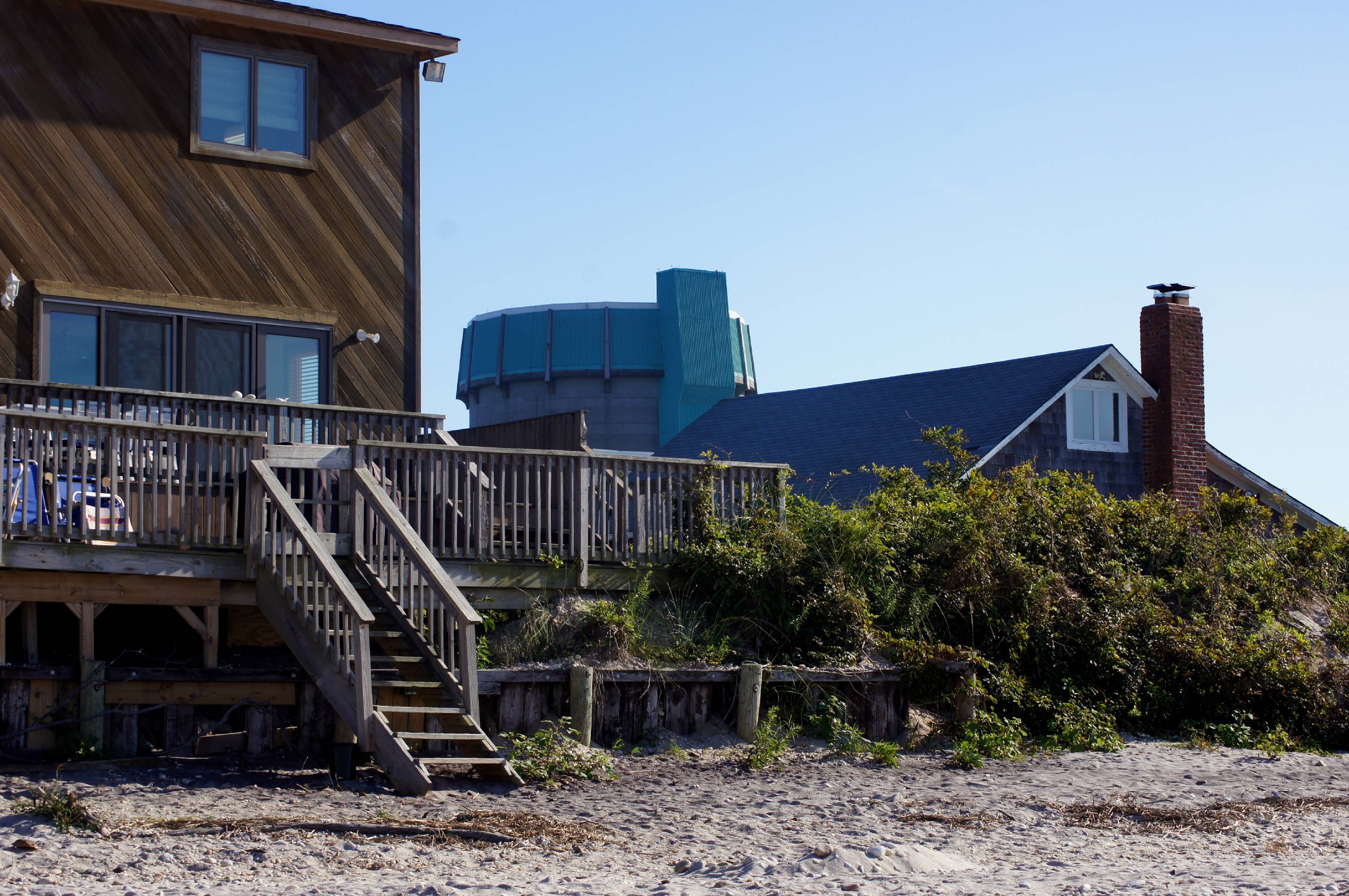

- London Today
- London Tomorrow
- London this Weekend
- Free exhibitions
- London Theatre
- What's on in April 2024
- What's on in May 2024
- What's on in June 2024
- What's on in July 2024
- Add an Event
- Architecture
- Book reviews
- Day trips from London
- Food and drink
- Exhibitions
- Alleys and passages
- Pocket parks
- London Transport News
- London Tickets
- Anniversaries
- London Museums
- What's on in London
- London News
Your guide to London's culture and transport news and events taking place across the city.
A tour around Shoreham Power Station
Xa tour around shoreham power station.
As part of last weekend’s Open House not in London events, I secured a tour of the Shoreham power station. There are in fact two Shoreham power stations to choose from, one nuclear and one gas powered.
Sadly for my modest “visiting nuclear things” fetish, I ended up visiting the gas powered station near Brighton and not the former nuclear power plant in the USA.
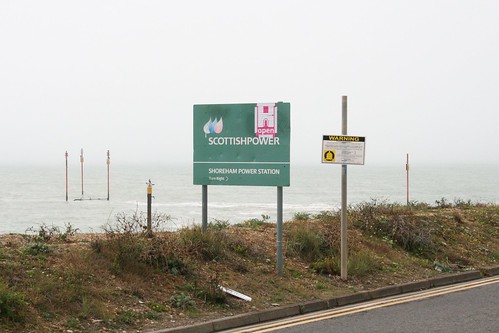
Although the building there now is quite modern, the area is home to one of the earliest power stations in the UK, when in 1882 Robert Hammond hooked up the existing steam engines in use in an Iron Foundry to a dynamo and started generating electricity.
This was used to power sixteen Arc lamps on a circuit around the town centre, operating from dusk until 11pm every day.

Over the next few years, the use of the site for generating electricity increased to the point that it became a dedicated power plant and by 1904 what was now called the North Road station was generating 5.9Mw of power.
Noticing the increasing demand for electricity, the Brighton Corporation decided to build Brighton A Power Station nearby, and that opened in 1906 and lasted until 1976.
However, in 1946 the Brighton Corporation was ordered to proceed with the construction of a second vastly larger power station on the site of the current station, and this coal fired station worked up to 1976, when coal deliveries to the local port became uneconomic.
Looking at a photo of the Brighton B Power station might look familiar to us Londoners. However, unlike its local counterpart, the London-by-Sea variant of Battersea Power Station was demolished, with one tower blown up in 1988 and the building taken down, leaving the strange lonely rump of a single chimney remaining on the sea shore.
As the tallest structure in the area, it had become a navigation aid – for both sea and air transport.
Jumping forward by a decade, and plans were announced to build another power station on the same site, and in 1998 the remaining chimney was blown up and construction started on the current Shoreham by Sea power station.
Curiously, the replacement chimney for the new power plant is much taller than it needs to be – because it replaced the old chimney’s dual-function as a local navigation aid – at least, on a clear day it does. The manager who took us around said he would love to lop the top half off as it would save a lot of money in maintenance bills, but then local boats might get lost.
The chimney also houses a nesting pair of falcons who return each year.

The tour was in two halves, with a talk about the site history (see above) and the issues that affect the running of the plant, then a walk around the place itself.
Very sadly, no photos were allowed inside the building, for confidential reasons given to me afterwards that I can sympathise with, but we were free to photograph the outside.

To be honest, you aren’t missing much as the building is really not much more than a gigantic shed with a vast metal box inside it that contains the generator turbines and is incredibly noisy.
The power station is what is known as a combined cycle gas turbine (CCGT) station – where what is basically a gigantic jet engine is fed air and gas and spins at a very high speed to generate electricity. The hot gas that is blasted out and would ordinarily be used to push an aircraft forward is here channelled into a 7-story high water boiler and the steam generated is used to power three more generators.
The “jet engine” generates 240MW of electricity and the steam turbines combine to add a further 160MW, bringing the plant up to 400MW in total. The second page of this pdf file explains how it works.
The efficiency of converting gas into electricity is 58%, which compares to an average of 40% for coal plants.
To condense the steam down to water again, they cool it using sea water, and the intake valve is a large concrete tube next to the sea shore, with water expelled a bit further down the shoreline, at about 10 degrees Celsius warmer.

Inland power plants next to rivers can’t expel water as warm as that, which is why they have the distinctive cooling towers. Incidentally, the cooling towers emit just steam – so photos of electricity plants pollution illustrated by photos of cooling towers are very naughty.
Sitting next to the power station itself is the familiar sight of a substation, and we could just see the three main cables that carry electricity from the station, around to a side building via some underground conduits and into another building.
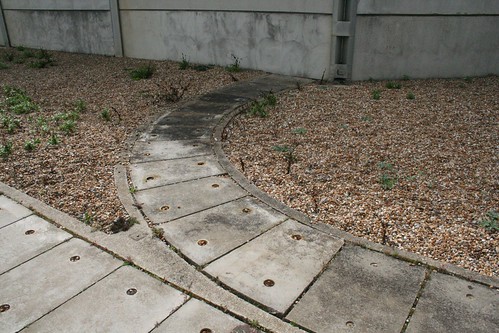
Here, there is a 180feet deep shaft that leads to a “tube tunnel” under the local harbour and over to another shaft on the other side where it plugs into the National Grid.
No, we were not allowed to go down into the tunnel – or even peek down the shaft from the top. However, someone has been down there, and his report is here . Lucky git 😉
Talking about the National Grid, when we were there the plant which can output 400MW was actually running on automatic control and wobbling around 300MW.
In order to maintain the UK electricity supply at as close to 50Hz as possible, power output has to be adjusted continually – so while some power plants will be on full output, others are held in standby. Which do what and when is a commercial decision.
When UK demand changes, then Shoreham would change its output as needed and we were shown some live graphs of that happening. You can also see how that fluctuation affects the UK as a whole via this live website .
The UK famously has it’s TV show related kettle surge where the National Grid needs to bring on a load of power quickly just as the closing credits start to roll on the television screen.
Another source of imbalance that is slowly starting to be felt is from the tiny amounts that people “feed-in” to the Grid from their domestic solar panels etc. Those are essentially a known unknown, and their unexpected wobbles have to be handled by the Grid.
Paradoxically, wind power while variable, varies slowly enough that its deviations are not a significant issue.
So, power is wobbling around and the power stations try to keep up. Over a period of a year, they are expected to maintain a level 50Hz. This is important in many areas, but especially with mains powered clocks, as their time is affected by the electricity supply. If they are running slow, then sometimes overnight the Grid will deliberately run “fast” in order to catch up.
So if you wake up one morning feeling very tired – blame the National Grid as they might have knocked a few seconds off your clock overnight.
Back to Shoreham, because of its location next to the sea, and in a secured area, they also act as a bit of a wildlife reserve for rare shingle plants, and what to me looked like just a pile of stones is actually a site of special scientific interest.
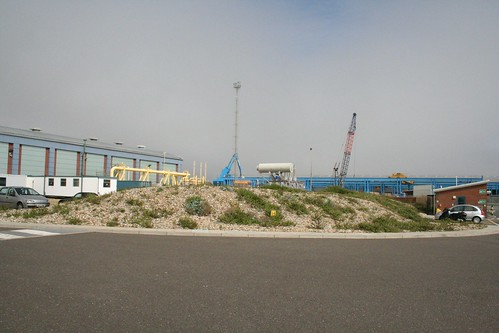
I had guessed the tour might last maybe an hour or so, but we were actually there for over two hours, which also meant I missed my reserved train home (and the hoped for walk to Brighton), but it was worth it for a look around the place – and the talk.
Going into the main plant building needed us to wear ear-plugs, which I kept. Might use them if I end up sitting next to someone with an iPod in the tube train.
Related Blog Posts:
Early Electricity Supplies in London
Dr Scott’s Electric Hair Brush – from Oct 1882
Be the first to know what's on in London, and the latest news published on ianVisits.
Monday news roundup
Wednesday events guide
You can unsubscribe at any time from my weekly emails.
This website has been running now for over a decade, and while advertising revenue contributes to funding the website, it doesn't cover the costs. That is why I have set up a facility with DonorBox where you can contribute to the costs of the website and time invested in writing and research for the news articles.
It's very similar to the way The Guardian and many smaller websites are now seeking to generate an income in the face of rising costs and declining advertising.
Whether it's a one-off donation or a regular giver, every additional support goes a long way to covering the running costs of this website, and keeping you regularly topped up doses of Londony news and facts.
If you like what you read on here, then please support the website here .
I’m impressed if you can hear someone else’s iPod over the noise of the the really! Good report, and great website!
Good article except the Brighton B station worked up to 1986! The station was still running in 1981 when I did some training there.
Loved your article on the Shoreham Power Plant! I live not too far and had no idea there had been tours. Would you be able to provide me with any contact information for me to set up a tour? Thank you so much!
See the link in the opening paragraph.
Really wonderful article. I grew up in the area and one of my earliest memories is seeing the power station going to Southwick on the train.
I was 3 at the time, and remember thinking how forlorn the solitary remaining tower looked with it’s companion.
Really, thank you for writing this. I’m away from my family this christmas because of things, and I’ve been reading up about places I remember from my childhood. This really was a delight to read
bit of home schooling going on! how many steps up the tower of the power station please?
Keep up with ianVisits

Be the first to know what is on in London, and the latest news published on ianVisits.
Weekly news roundup
Weekly events guide
Latest five articles

Article Categories
- Pocket Parks
- Unbuilt London
- Transport News
- London Exhibitions
- London Ticket Alert
- Alleys and Passages
- London visitor guide
- London theatre tickets
- London news
- London museums
© ianVisits
Take a look inside the abandoned Shoreham Nuclear Power Plant
The Shoreham Nuclear Power Plant was built between 1972 - 1984 in New York.
It was met with heavy protests from locals while under construction, this was due to the Chernobyl disaster, which killed 31 people.
Locals in the area feared that the same outcome could happen, and refused to sign evacuation plans which are required before the plant can open and be fully operational.
This led to the full decommission and abandonment of the plant in 1994.
Till this day the building still stands and even has power.
Produced by David Ibekwe .
More from Lifestyle
- Main content

The Hacker Quarterly
NOW ON STANDS!

PDF and EPUB Other Digital Editions
- Cover Gallery
- Submissions
- Digital Editions
- Off The Hook
- Off The Wall
- Brain Damage
- Ministry of Truth
- Shadow Over Li
- Payphone Image Gallery
- Channel 2600
- Freedom Downtime
- Around the World
- HOPE '94
- Beyond HOPE
- The Fifth HOPE
- HOPE Number 6
- The Last HOPE
- The Next HOPE
- HOPE Number 9
- The Eleventh HOPE
- The Circle of HOPE
- HOPE Videos
- 2600 meetings
- Visit The Store
- Subscriptions
- Back Issues

A TOUR OF THE SHOREHAM NUCLEAR POWER PLANT - JUNE 3, 1983
The "unprecedented access" to the Shoreham nuclear plant we alluded to didn't stop at a mere press conference. We managed to get a tour of the whole plant! I had actually gotten arrested in 1979 (four years ago to the day!) at a previous demonstration against this very plant and now here I was, on June 3, 1983, inside it being shown around with a bunch of other reporters. Isn't life strange?
There's so much to digest here and probably a whole lot of sound that others will understand far better than me. I learned that floors in the plant were measured in elevation levels rather than floor numbers and that the construction workers at the plant really liked to write graffiti on the walls. At one point, you'll hear me trying to social engineer the guide into explaining exactly how the emergency evacuation sirens were activated. You'll also hear the guide's theory on cigarettes and why fish like nuclear plants.
DONATE BITCOIN
TUESDAY: Off The Wall
WEDNESDAY: Off The Hook
Listen live to WBAI
2600 Archive
2600 Magazine P.O. Box 752 Middle Island, NY 11953 USA Telephone/Fax: +1 631 751 2600

Shoreham – What Happened, Why, What Are the Lessons to be Learned
In January of 2009, I was contacted by a young man who introduced himself as an aspiring documentary film maker who was an avid listener of The Atomic Show Podcast. Ray grew up on Long Island and was always interested in the saga of the local nuclear power plant at Shoreham.
He had developed a partnership with a journalist who was also interested in telling the story – after doing some deep research and learning all he could about both sides. They thought that interviewing me would add something to the story, even though I only know about the specifics from written research and second hand information.
Shoreham is famous within the nuclear industry as one of the main reasons why people who propose nuclear plants have trouble raising funds. The construction project was embroiled in numerous challenges. It took far longer and cost about ten times as much as originally budgeted. Finally after the Long Island Lighting Company had borrowed and spent nearly $6 billion to resolve all of the issues, complete the construction and obtain an operating license from the US Nuclear Regulatory Commission, local governments refused to agree to the emergency response plans. The plant never operated and was sold to the state of New York for $1 plus an agreement to take on the accumulated debts.
People on Long Island are still making payments on the loans. They have some of the highest electrical power rates in the country. They also are blessed with breathing the exhaust from the diesel power stations, oil furnaces, and waste to energy plants that supply most of the energy needs on the island.
Ray and his partner, James, have finished gathering many hours worth of video and audio interviews to document the complex and intriguing saga. They conducted detailed, well prepared interviews with a number of people including Gwyneth Cravens, Harvey Wasserman, and Karl Grossman.
Gwyneth Cravens lives on Long Island and was an active protester working to stop Shoreham from being built and operated. After becoming friends with a man who specialized in probabilistic risk assessments related to nuclear energy, she did some serious research and wrote a book titled Power to Save the World: The Truth About Nuclear Energy .
Karl Grossman and Harvey Wasserman have built multi-decade careers around publishing and speaking about their efforts to slow or stop nuclear energy projects, so they offer a completely different view of the situation. Both are still active in efforts to get rid of nuclear energy plants and prevent any new ones from being constructed.
The lessons in the interviews along with other evidence that the investigators discovered will be valuable for all interested in the topic. Now all Ray needs to do is to complete the editing and arrange for distribution – which he plans to do via the web, probably for free. If you would like to help Ray reach the finish line so that the world can see the completed story, please go to his Kickstarter.com fundraising site to find out more.
Rod Adams is Managing Partner of Nucleation Capital , a venture fund that invests in advanced nuclear, which provides affordable access to this clean energy sector to pronuclear and impact investors. Rod, a former submarine Engineer Officer and founder of Adams Atomic Engines, Inc., which was one of the earliest advanced nuclear ventures, is an atomic energy expert with small nuclear plant operating and design experience. He has engaged in technical, strategic, political, historic and financial analysis of the nuclear industry, its technology, regulation, and policies for several decades through Atomic Insights, both as its primary blogger and as host of The Atomic Show Podcast. Please click here to subscribe to the Atomic Show RSS feed . To join Rod's pronuclear network and receive his occasional newsletter, click here.
One Comment
Since it does not appear that I will raise $5000 on Kickstarter by the end of next month I have decided to set up the same thing on IndieGoGo.com. To those who donated to the existing Kickstarter project if the project does not meet its goal no money will be transferred. IndieGoGo allows you to log-in via Facebook, pay via PayPal, Amazon Payments, or Credit Card, and no matter whether or not the goal is reached the money will still go to the production! Just follow the link bellow: http://www.indiegogo.com/SHOREHAM More should be coming soon.
Comments are closed.
Recent Comments from our Readers
Rob I share some of your professional background. I also share your concern for those suffering in energy poverty. I…
US is a huge energy producer in a world that still has plenty of energy poverty. Over 700 Million people…
A good writeup Michael. A couple of poimts though. Actually water without precise chemistry control is very corrosive. All reactors…
Here’s a comment on a business case for HALEU. This is from a reading assignment from Raluca Scarlat, Assistant Professor…
Since posting my previous comment on this thread, I’ve learned about another property of MOX fuel that poses a problem…
Similar Posts
Boxer-kerry bill likely to include nuclear title. nei’s alex flint discusses with tyler suiter of clean skies tv.
Clean Skies TV’s afternoon report for Friday, September 25, 2009 includes a substantial discussion between Tyler Suiter and Alex Flint, Senior Vice President of the Nuclear Energy Institute, about the politics of the Senate’s climate bill, also known as the Boxer-Kerry bill. It is encouraging to recognize that NEI has such a well informed and…
Liquid Fluoride Reactor Talk on Google Tech Talk
I have not yet had a chance to view this, but the material in this video was partially prepared by my friend, Kirk Sorensen, so I know it is good. Hope you enjoy:
More small reactor discussions
Apparently my meeting radar was off recently and I missed learning about the Global Nuclear Renaissance Summit in Alexandria, Virginia on 24 July until it was too late. I would have taken time from my day job, especially if I would have known that Dale Klein was going to spend some time talking about the…
Jack Spencer Published a Must Read Paper About Misplaced Government Efforts to Support Small Reactor Development
Jack Spencer of the Heritage Foundation has published an issue paper titled Senate Attempts to Promote Small Nuclear Reactors Fall Short that is worth reading. He notes that the sector is showing some significant private activity already. He expresses concerns that I share that some of what the Senate is proposing will be counter productive…
Atom Watch keeping us up to date on German nuclear developments
Alexandra Prokopenko at Atom Watch has been keeping a close eye on the question Where Should Germany Store Its Nuclear Waste? This question has been gaining increasing importance in recent weeks because Angela Merkel’s Christian Democrats announced desire to reopen the decision to prematurely shut down existing nuclear plants and to even consider the possibility…
We Support Lee: Al Gore's Speech
There is an interesting and well reasoned post at We Support Lee: Al Gore’s Speech that is worth a visit. It contains a clear articulation of the plusses and minuses of various energy production methods and tries to understand the politics that often underly some of the statements made about each energy production method. Energy…
- News 12 New York
- Download the News 12 App
- News 12 Deals
- Power & Politics
- The East End
- Bronx Events
- Environment
- Food & Fun
- Numbers & Links
- State of Our Schools
- Transportation
- Noticias Univision 41
- Ask the Borough President
- Bronx Birthday Smiles
- Celebrity Buzz
- Garden Guide
- Hometown Heroes in New York City
- LIVE BLOG: News 12 weather updates
- New York City Honor Roll
- New York City Weather Photos
- On the Road
- Photo Galleries
- Scholar Athlete
- Stress Awareness Month
- Team 12 Investigates
- Yankees Opening Day
News 12 Originals
- Crime Files
- Kane in Your Corner
- On a Positive Note
- Road Trip: Close to Home
- Turn to Tara
Choose Your Region
- Connecticut
- Hudson Valley
- Long Island
- Westchester
Be the first to know
Topics you care about, straight to your inbox
30 years after deal to shutter Shoreham plant, multibillion-dollar 'eyesore' remains
This year marks the 30th anniversary of the deal that shuttered the shoreham nuclear power plant. news 12 digital is exploring the saga of shoreham to find out how the power of the public's voice rose above the pitch of the nuclear age..
News 12 Staff
Dec 18, 2019, 1:00 PM
Updated 1,590 days ago
More from News 12

NYPD: Multiple armed suspects wanted for string of robberies on Bronx train

Temperatures return to the 60s on Friday for NYC

Exclusive: Animal rescue group stepping in to help cats in danger of being mauled

Council Member Sanchez introduces building inspection, integrity bills after Billingsley Terrace collapse


Shop Mother’s Day Gifts – Exclusive Offers Up to 75% OFF!

Baseball's oldest living major leaguer, former Yankee Art Schallock, is turning 100

Bronx Children's Museum offers familiar fun, valuable education for youth and families

NYPD: Woman wanted for punching another woman, stealing her phone in Highbridge
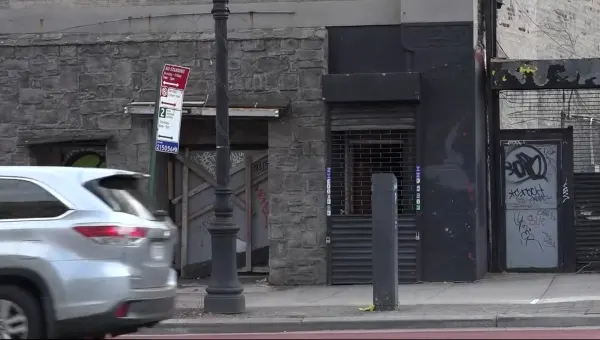
Council Member Feliz plans to tackle rising vacant storefronts in the Bronx

Multiplex Cinemas in Concourse Plaza set to close next month

Libraries could see new changes following no reversal of $58.3 million budget cut
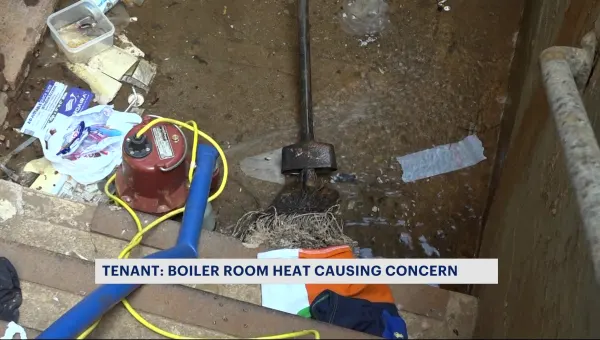
NYCHA resident says boiler issue causing safety and health concerns

Parked car left in shambles; video shows car smash into it multiple times

New community center focuses on supporting former male inmates on road to recovery

The Bronx Museum of Arts new exhibit showcases NYC artists from fellowship

NYPD: Fordham shooting kills 34-year-old man, leaves another man critical

Police Athletic League hosts annual singing and dancing competition for kids

New Yankees murals at Bronx Terminal Market pays homage to Black baseball legends

DOT adds $6 million to boost overnight and evening deliveries over peak hours

MTA service alerts system now includes bridges, tunnels
This Abandoned Power Plant Isn't Far From A Beautiful NY Beach
Visitors to this beautiful North Shore beach might be surprised to know that it's also home to an abandoned nuclear power plant two miles away.
Less than two miles from a popular North Shore Long Island beach sits an abandoned power plant. The facility, which was built in 1973 , was done so with every intention of being fully operational for decades to come. However, as many major power plant decisions have shown us, not all of them have been for the best. With Three Mile Island and disasters such as Chernobyl haunting the not-too-distant past, it was determined that Long Island's own would never truly see the light of day.
This would otherwise be nothing more than an abandoned, out-of-commission plant was it not for the gorgeous North Shore beach that resides near it. Depending on where a person is on the beach, it's entirely possible that the power plant can be seen from its shores, making this a pretty unique Long Island destination for fans of dark tourism .
Shoreham Nuclear Power Plant: The Mistakes Of The Past
It's not entirely uncommon when such a public opposition makes for a variable force against a business entity, it's just rare that it succeeds. In the case of what was to be the Shoreham Nuclear Power Plant, this is exactly what happened. If anyone decided to look at where the power plant sits on a map, its proximity not only to the nearest beaches but to residential neighborhoods, as well, is astonishing. This realization was not lost on residents of Long Island who, knowing what a nuclear disaster could mean for such a small sector of New York, fought its opening.
When the idea was coined, it was intended that Shoreham's newest power plant would power nearly all of Long Island. In the early 1970s, this was a huge deal because it would have opened up an avenue for nuclear power that wasn't seen up to that point. The need arose when more and more power was being consumed on the island, likely due to the number of people moving out from New York City, only an hour and a half train ride away. Another concern was its proximity to the Long Island Sound - a significant body of water that sits between Long Island and Connecticut. Two major factors that led to the shutdown of the plant, though, argued by the general public were:
- Natural Disasters. Time for a geography lesson: Long Island sticks out into the Atlantic as somewhat of a tail from the state of New York. It's this location that has made it somewhat of a magnet for strong hurricanes that come up the East Coast, and a lack of response to Hurricane Gloria at the time only strengthened the argument of 'what if.'
- Nuclear Disasters. With Three Mile Island and the events of Chernobyl still fresh in everyone's minds , the hesitation was tangible on the part of the general public. Many residents of Long Island were not comfortable with a) a nuclear power plant so close to people and protected land and b) were not comfortable with the fact that an evacuation plan or route was never planned or approved.
Related: Dark Tourism: What It Is And How To Do It Respectfully
The Protests
When news of plans to build a second power plant in Lloyd Harbor came up, the protests were practically unstoppable at that point. The largest protest Long Island had seen up to that point brought 15,000 people forward to take a stand against any nuclear power on the island. By the end of it all, more than 600 people were arrested - but they had gotten the job done.
- Fact: The protests were part of International Antinuclear Day, and Pete Seeger even made an appearance to perform for protestors who showed up.
It's estimated that it took roughly 353 truck shipments to remove five million pounds of nuclear waste from the plant, according to the New York Times . This nuclear waste was only a by-product of testing prior to the plant's expected start date.
Visiting Shoreham Beach Today
Today, both Shoreham Beach and Wading River Beach flank either side of the abandoned power plant. The rocky beach is usually full of small shells and pebbles, with water that's calm thanks to the shelter of Connecticut that sits opposite the beach. Those enjoying a beach sunset or taking a swim in the Sound would never guess that a nuclear power plant was almost fully functioning less than two miles away.
Walking down to the jetty directly to the East will give beach-goers a view of the waterway that leads straight to where the power plant sits today, still inactive but tightly secured under lock, key, and the protection of security cameras. There were also rumored plans back in 2017 to turn the power plant into a state park , which have yet to be carried out. Whatever the fate of this power plant is, there's no denying how eerie and out of place it is, sitting on the edge of a Long Island beach.
Next: Radioactive: What Is Atomic Tourism & Can It Be Done Safely?
Shoreham Nuclear Power Plant, New York
The Shoreham Nuclear Plant is one of a few in the nation which were built, at great expense, but never used. During the plant's protracted construction which lasted from 1973 until 1984, and ended with the construction of an 820MW reactor, numerous safety, regulatory, design, construction, and financial malfeasance issues arose, as well as lots of opposition from activists, and locals, who were concerned about the lack of a suitable evacuation plan, in the event of an incident. The plant's originally estimated cost of less than $100 million, swelled to $5.5 billion, making it then one of the most expensive nuclear power plants in the U.S. In 1992, its owner, the Long Island Lighting Company, gave up, and sold the plant to the Long Island Power Authority for $1.00, to be decommissioned. By 1994, the plant's decommissioning had been completed, at a cost of $181.5 million, though the site still has most of its structures still in place. The plant is located on Long Island's north shore, and a number of alternative uses have been proposed for the site, including a cargo port, a gas-fired power plant, a solar panel manufacturing plant, and a state park.

- Real Estate Transfers
- Classifieds
Explore Our Site
- Write the Editor
- Legal / Public Notice Portal
- Send Us a Tip

- Riverhead News Review
- Shelter Island Reporter
- Northforker Vacation Guide
- Southforker

Explore northforker
Newsletter Sign Up
Karl grossman column: a nuclear coverup.
By Karl Grossman
- Share on Facebook Facebook Created with Sketch.
- Share on Twitter Twitter Created with Sketch.
This week marked the third anniversary of the start of the Fukushima Daiichi nuclear disaster.
Long Island anti-nuclear activists are still taking a deep breath and expressing thanks a similar catastrophe didn’t happen here. “Fukushima shows how we dodged a bullet,” said Jane Alcorn of Wading River, former coordinator of Citizens Lobby Opposing Shoreham.

It’s hard to believe the harebrained scheme now, but the Shoreham nuclear plant was to be the first of seven to 11 nuclear power plants the Long Island Lighting Company (LILCO) wanted to construct. LILCO sought three nuclear plants at its Shoreham site — “Shoreham 1” was fully built when stopped — four at Jamesport and several plants in between, some on Long Island Sound. LILCO also considered building a nuclear plant in Bridgehampton.
The East End of Long Island would have had a nuclear complex similar to that in Fukushima. Daiichi is the Japanese word for “one,” thus Fukushima Daiichi involves one set of six nuclear plants. Four miles south is Fukushima Daini with four nuclear plants.
When the tsunami struck, all power was lost at Fukushima Daiichi and multiple meltdowns were triggered, and Fukushima Daini almost suffered the same fate. “Little known is that Daini nearly melted down, too,” said Kevin Kamps of the organization Beyond Nuclear. “Daini survived due to a single off-site power line,” Its other power lines and back-up diesel generators all went down, as they did at Daiichi.
The impacts from the ongoing Fukushima Daiichi disaster have outraged Long Island anti-nuclear activists because of the denials by nuclear regulators and the nuclear industry, although, the activists note, they’ve become used it. “It’s a nuclear fraternity,” Ms. Alcorn said.
The lead global agency regulating Fukushima is the International Atomic Energy Agency (IAEA) which insists “no health effects have been reported in any person as a result of radiation exposure from the accident.” The IAEA was formed by the United Nations in 1957 with the mission “to accelerate and enlarge the contribution of atomic energy.”
“The IAEA is a pawn of the nuclear industry,” said Priscilla Starr of Montauk, who founded the Coalition Against Nukes (CAN) in March 2011 in the wake of the Fukushima disaster. It has gone national and international. Ms. Starr speaks of a “massive cover-up” of Fukushima health consequences.
Indeed, a giant lie is involved. While the IAEA and the nuclear industry claim absolutely no health impacts, Dr. Chris Busy, scientific secretary of the European Committee on Radiation Risk, projects a death toll of more than a million from the radioactivity released. Other scientists make similar projections.
Dr. Helen Caldicott, a founder of Physicians for Social Responsibility and an expert witness at licensing hearings on LILCO’s would-be Jame-sport nuclear plants, told a symposium on “The Medical Implications of Fukushima” in Japan that, “The accident is enormous in its medical implications. It will induce an epidemic of cancer as people inhale the radioactive elements, eat radioactive vegetables, rice and meat, and drink radioactive milk and teas.
As radiation from ocean contamination bio-accumulates up the food chain … radioactive fish will be caught thousands of miles from Japaneseshores. As they are consumed, they will continue the cycle of contamination, proving that no matter where you are, all major nuclear accidents become local.”
Already an excessive number of cases of thyroid cancers have appeared in Japan, an early sign of the impacts of radioactivity. A study by the Radiation and Public Health Project has found radioactive iodine fall-out from Fukushima has damaged the thyroid glands of children in California. And the biggest wave of radioactivity in the Pacific Ocean from Fukushima is slated to hit the west coast of North America in coming months. Meanwhile, every bluefi n tuna caught in the waters off California in a Stanford University study was found to be contaminated with cesium-137, a radioactive poison emitted on a large scale by Fukushima.
“It’s terrifying,” says Andrea Kalkstein Lieberman of Water Mill, a CAN activist. “It has shocked me to learn about what is hidden from us and to discover the truth about nuclear power.”
And, emphasizes East Hampton’s Bill Chaleff, a long-time member of the East End Shoreham Opponents and the Suffolk County Solar Energy Commission, there’s no need for atomic energy. “We could go 100 percent with solar and other renew-ables,” says Mr. Chaleff, an architect of green and sustainable buildings.
Still, he says, even as radioactivity continues to spew out into the air and sea in the ongoing Fukushima disaster, there’s “talk of reactivating the nuclear monster.”
Related Content
Guest column: early challenges for county executive.
The leading political contest in Suffolk in 2019 will be the race for county executive, the top post in...

Column: Does Suffolk County really need a 17,500-seat arena?
Entertainment-starved East End residents rejoice! Our elected Suffolk County officials are pushing a brilliant plan to bring a 17,500-seat...

Suffolk Closeup: A green, and tasty, future for Long Island’s wine region
Long Island, with a centuries-long history of farming, has undergone an agricultural revolution in just a few decades, sparked...

Suffolk Closeup: Ruling against preserved farmland development is misguided
A local environmental organization has brought a lawsuit challenging the implementation of the Suffolk County Farmland Preservation Program, a...

Suffolk Closeup: Inside the county elections
The astonishing win of the U.S. presidency by Donald Trump on the Republican ticket has, to put it mildly,...

Suffolk Closeup: Budget battles at top of county government
The top fiscal watchdogs in Suffolk County government are critical of County Executive Steve Bellone’s recommended $2.96 billion county...

Watch CBS News
Environmental Group Wants To Transform Decommissioned Nuclear Plant Into State Park On LI
April 18, 2017 / 5:19 PM EDT / CBS New York
WADING RIVER, N.Y. (CBSNewYork) -- A battle is brewing over some incredible land on the Long Island Sound.
Decades ago, it was supposed to be a nuclear power plant, but that never opened. Now, it's just sitting there, and some want to make it a state park.
"It's just sitting there, like an eyesore," one man said.
The Shoreham Nuclear Power Plant was decommissioned two and a half decades ago. The $6 billion white elephant rising above the marshland sits on 700 acres of some of the most pristine property on the East Coast, CBS2's Jennifer McLogan reports.
"I know there are some ideas circulating about the local land here," a Wading River resident said.
Among the ideas are installing wind turbines offshore, dredging and developing a deep water port for ships, or razing the forest and installing hundreds of solar panels, like the solar farm in nearby Calverton.
"Everybody supports solar, but you don't cut down trees in order to have solar. That's like saying we need to destroy the environment in order to save it. It's just stupid," Richard Amper, of the Pine Barrens Association, said.
The Pine Barrens Association favors installing solar panels on existing buildings or cleared land.
On Tuesday, the group hosted a walking and bus tour through the woodlands and invited local leaders from both sides of the aisle to see what's at stake.
"If this is able to be preserved, it would complete a north-south greenbelt right through the middle of our largest town," a tour guide said.
The latest proposal is to partner private and public funds to preserve the land, creating the newest state park in New York.
Some on the tour Tuesday said preserving the Shoreham Wading River Forest would also protect the aquifer and underground water supplies, McLogan reported. The acreage has existed as a critical habitat for endangered bird and animal species.
"To make one big, great, giant, preserved state park," Brookhaven Councilwoman Jane Bonner said of the ambitious goal.
"I think we would hate ourselves if we didn't make this fight," Sid Bail, of the Wading River Civic Association, added.
Both National Grid and PSE&G would have to sign off on the state park plan for it to be considered feasible.
Featured Local Savings
More from cbs news.

Here are the best ranked high schools in the Tri-State Area in 2024

YouTube needs to stop suggesting ghost gun videos to young people, officials say

NYC looks to limit climate change's impact with flood resiliency projects

See it: Coyote caught on video in Central Park

IMAGES
VIDEO
COMMENTS
The Shoreham Nuclear Power Plant was a completed General Electric nuclear boiling water reactor located adjacent to Long Island Sound in East Shoreham, New York . The plant was built between 1973 and 1984 by the Long Island Lighting Company (LILCO). The plant faced considerable public opposition after the 1979 Three Mile Island accident and the ...
The idea for the Shoreham Nuclear Power Plant project was hatched in 1966 by the Long Island Lighting Company (LILCo) The U.S. Atomic Energy Commission authorized construction in 1970. The site is ...
Long Island's only nuclear power plant, closed and shuttered since it was decommissioned in 1994. Today, it sits completely empty, a relic of 1970s design permanently frozen in time. A month ago, I heard that the now vacant Shoreham Nuclear Power Plant was available as a filming location, and I immediately set up a tour.
Behind it all sits a hulking structure, a relic of one of the most divisive flashpoints in Long Island history -- the Shoreham nuclear power plant. WATCH: Power of the People - Full Documentary ... LIPA declined repeated requests for a tour of the property, citing safety reasons. But News 12 was granted access in 2003, and our cameras ...
A tour around Shoreham Power Station. Published 16 September 2011 By Ian Mansfield Events and Tours. As part of last weekend's Open House not in London events, I secured a tour of the Shoreham power station. There are in fact two Shoreham power stations to choose from, one nuclear and one gas powered. Sadly for my modest "visiting nuclear ...
The Shoreham Nuclear Power Plant was built between 1972 - 1984 in New York. It was met with heavy protests from locals while under construction, this was due to the Chernobyl disaster, which ...
The Shoreham Nuclear Power Plant was built between 1972 - 1984 in New York. It was met with heavy protests from locals while under construction, this was due...
2021-07-15. The "unprecedented access" to the Shoreham nuclear plant we alluded to didn't stop at a mere press conference. We managed to get a tour of the whole plant! I had actually gotten arrested in 1979 (four years ago to the day!) at a previous demonstration against this very plant and now here I was, on June 3, 1983, inside it being shown ...
Discover Shoreham Nuclear Power Plant in Shoreham, New York: The first commercial nuclear power plant constructed on Long Island.
Shoreham is famous within the nuclear industry as one of the main reasons why people who propose nuclear plants have trouble raising funds. The construction project was embroiled in numerous challenges. It took far longer and cost about ten times as much as originally budgeted. Finally after the Long Island Lighting Company had borrowed and ...
Protestors demonstrating against the Shoreham nuclear power plant on June 3, 1979. It was the largest demonstration in Long Island history, and more than 500 people were arrested by the time it ...
This year marks the 30th anniversary of the deal that ultimately shuttered the plant. News 12 Digital revisited the story of the Shoreham nuclear plant to ex...
This year marks the 30th anniversary of the deal that shuttered the Shoreham nuclear power plant. News 12 Digital is exploring the saga of Shoreham to find out how the power of the public's voice ...
Shoreham Nuclear Power Plant. 1.97 miles. Brookhaven Relativistic Heavy Ion Collider. 5.49 miles. ... The first commercial nuclear power plant constructed on Long Island. Ridge, New York.
Published Jan 13, 2022. Visitors to this beautiful North Shore beach might be surprised to know that it's also home to an abandoned nuclear power plant two miles away. Less than two miles from a popular North Shore Long Island beach sits an abandoned power plant. The facility, which was built in 1973, was done so with every intention of being ...
The Shoreham Nuclear Plant is one of a few in the nation which were built, at great expense, but never used. During the plant's protracted construction which lasted from 1973 until 1984, and ended with the construction of an 820MW reactor, numerous safety, regulatory, design, construction, and financial malfeasance issues arose, as well as lots of opposition from activists, and locals, who ...
Shoreham Nuclear Power Plant The first commercial nuclear power plant constructed on Long Island. Listen and subscribe on Stitcher , Apple Podcasts , Spotify , and all major podcast apps.
Planned tour dates in 2024 include: March 29-30. April 1-6, 8-13, 15-20, 22-27, and 29-30. May 1-4, 6-11, 13-18, 20-26, and 27-31. June 1, 3-8, 10-15, 17-22, and 24-29. If B Reactor tours are possible in July, DOE will release those dates on Monday, June 3rd. If B Reactor tours are possible in August, DOE will release those dates on Monday ...
It's hard to believe the harebrained scheme now, but the Shoreham nuclear plant was to be the first of seven to 11 nuclear power plants the Long Island Lighting Company (LILCO) wanted to construct.
The Shoreham Nuclear Power Plant was decommissioned two and a half decades ago. The $6 billion white elephant rising above the marshland sits on 700 acres of some of the most pristine property on ...
In one of our craziest explorations ever, we find our way into a long-shuttered nuclear power plant.http://theproperpeople.comReddit discussion:https://www.r...
Apr 30, 1989. AFTER THE expenditure of a colossal $5.5 billion over the past 22 years, the Shoreham nuclear power plant on Long Island has finally won approval for full operation. The federal ...
13 nuclear power plants in China each released more radioactive tritium into the ocean in 2021 than the planned amount to be released from Japan's Fukushima Daiichi nuclear power plant in one year nhk.or.jp
DOE recently issued an information guide for communities considering coal-to-nuclear transitions that found transitioning from a coal plant to a nuclear one would create additional higher paying jobs at the plant, create hundreds of additional jobs locally, and spur millions of dollars in increased revenues and economic activity in the host ...
Virginia Nuclear Power Plants Performance Nuclear Regulatory Commission staff will hold a virtual . public meeting. April 30 to discuss the 2023 safety performance of the North Anna and Surry nuclear power plants. North Anna is located in central Virginia, and Surry is in southeastern Virginia. Dominion Energy operates both plants.